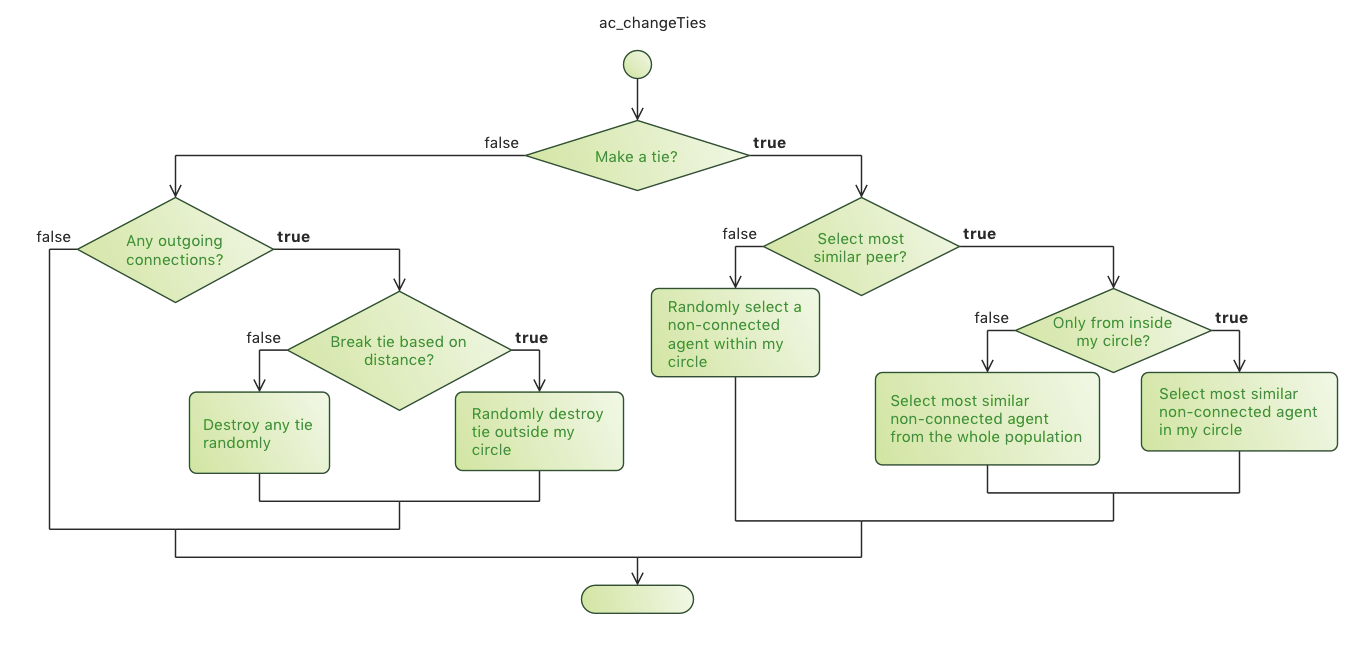ABM and Siena
Assesing complex statistical models using agent-based modeling
with Kurt Kreuger
Although Agent-based models (ABM) have been increasingly accepted in social sciences as a valid tool to formalize theory, propose mechanisms able to recreate regularities, and guide empirical research, we are not aware of any research using ABMs to assess the robustness of our statistical methods. We argue that ABMs can be extremely helpful to assess models when the phenomena under study is complex.

As an example, we create an agent-based model (ABM) to evaluate Stochastic Actor-Oriented Model (SIENA) estimation of selection and influence effects. The SIENA Model, proposed by Tom A. B. Snijders and colleagues, is a prominent network analysis method that has gained popularity during the last ten years and been applied to estimate selection and influence for a broad range of behaviors and traits such as substance use, delinquency, violence, health, and educational attainment. However, we know little about the conditions for which this method is reliable or the particular biases it might have.
The results from our analysis show that selection and influence are estimated by SIENA asymmetrically, and that with very simple assumptions, we can generate data where selection estimates are highly sensitive to mis-specification, suggesting caution when interpreting SIENA analyses.